We look at the eight best pueblos near Medellín worth a visit including Guatapé, Santa Fe de Antioquia, Jardín and Jericó. We also look at four hidden gem pueblos near Medellín that you won’t find in most of the English language guidebooks.
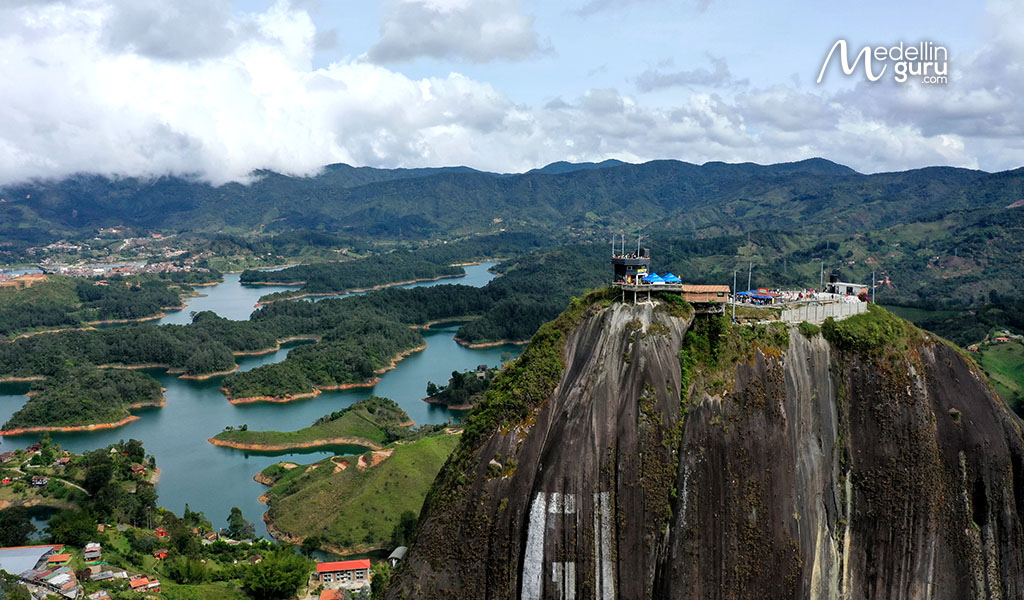
Some of these best pueblos near Medellín are fairly close to the city. So, they can be easy day trips from Medellín. And others are further away so are better for a longer visit like on weekends.
Here is our list of the eight best pueblos near Medellín that are all worth visiting.
8 Best Pueblos Near Medelllín
Picturesque Guatapé is a very popular pueblo to visit from Medellín. It’s a great place for a day trip or a weekend getaway from Medellín. In my opinion, no trip to Medellín and Antioquia would be complete without a trip to Guatapé.
Guatapé is located next to the massive man-made lake that was created for a hydroelectric dam built in the 1970s. So, it’s now a lakeside pueblo with many sidewalk restaurants and cafes plus water activities in the area.
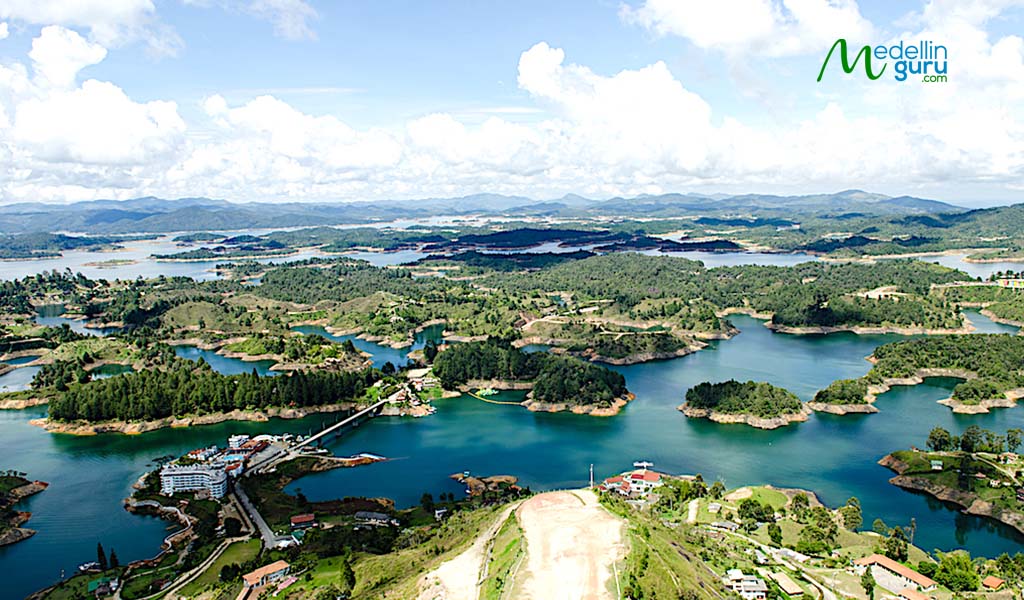
Also, there is El Peñól de Guatapé, which is a gigantic rock with incredible views. One of the most popular things to do in the area is to climb this huge monolith rock near the pueblo, which offers fantastic views of the area.
If you visit during the weekends, you’ll typically see the pueblo packed with Colombian tourists. Also, on the weekends, the boardwalk fills up with local vendors selling art, food and souvenirs. During the week, there are much fewer tourists, so you’ll you have the pueblo more to yourself with the colorful locals.
From Medellin to Guatapé
Location: about two hours east of Medellín – depart from the North Bus Terminal (Terminal Norte).
Guatapé is easy to get to. It’s only about two hours away from Medellín. So, you can go for a day trip or stay longer. Also, Guatapé is extremely colorful with the homes painted many colors and many have additional decorations.
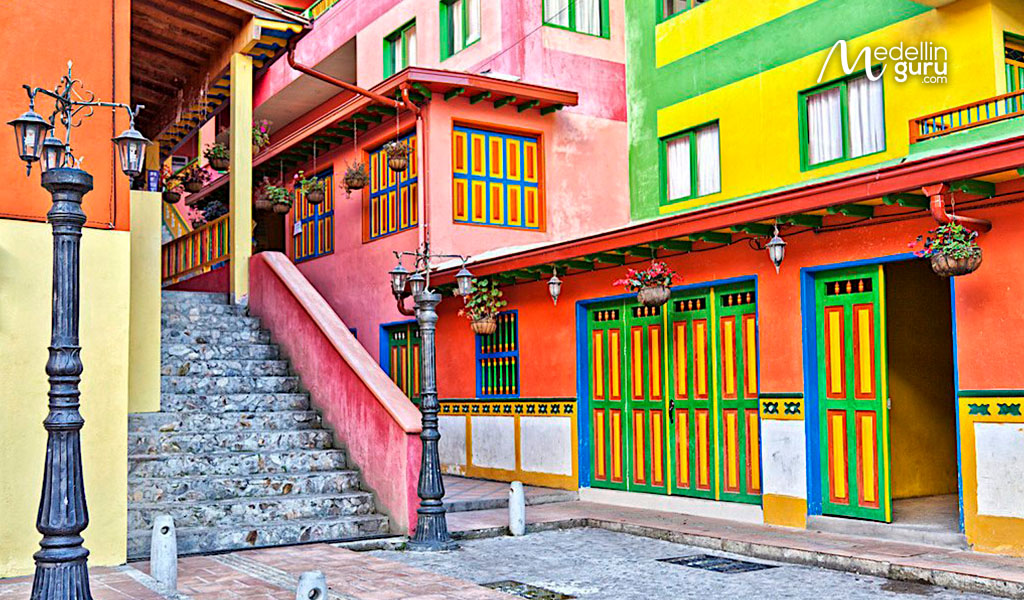
Colonial Jardín is a tranquil get-away from Medellin that boosts breathtaking mountain views and less tourists than the popular pueblo of Guatapé.
All the travel guidebooks recommend Guatapé as a ‘must-do’ day trip from Medellin. But if you are looking for a longer weekend break – to a destination with fewer backpackers – then the valley pueblo of Jardín is just the ticket.

Jardín (pronounced har-deen) is one of the most well-kept colonial towns in Colombia. Most noteworthy, it’s virtually unchanged architecturally for the last 140 years.
This quaint pueblo is bursting with vibrantly colored houses which pop-out against the surrounding green of the banana-leaf and ceiba tree-covered mountains.
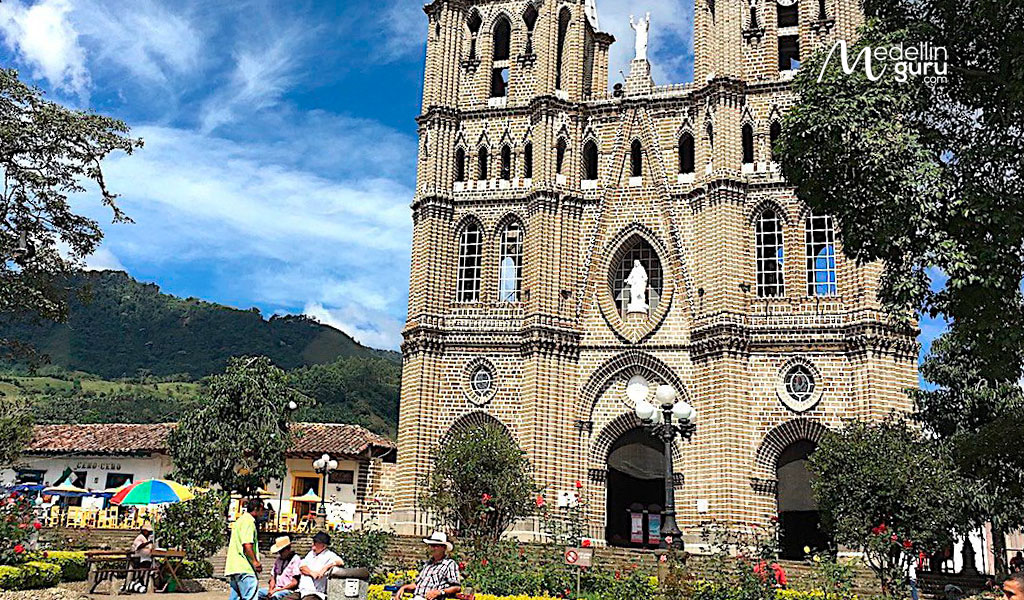
It’s a place where men ride down the unpaved side streets on horses with cowboy hats. Where locals congregate around the central square on a Saturday night. And where it is okay to take life a little bit more slowly.
For those wanting a quiet retreat from the bustle of Medellin, it’s a perfect getaway. The pueblo with less than 20,000 people offers both the tranquility of whiling-away the day in a hammock or reading a book. In addition, it offers nature lovers a haven of outdoor adventures nearby.
From Medellin to Jardín
Location: about 3 to 4 hours southwest of Medellín – depart from the South Bus Terminal (Terminal Sur).
The bottom line is that Jardín is a great place for a weekend getaway from Medellín and is worth visiting.
Santa Fe de Antioquia is known for its well-preserved colonial architecture and cobbled streets. And it’s the perfect pueblo for a day trip from Medellín.
The weather is nearly perfect in Medellín almost every day. The people are friendly. The mountains are beautiful. But sometimes, you just need to escape the city.
Sometimes you just want a change of scenery and some fresh air. And Santa Fe de Antioquia is a good place to go. Also, a road-trip to Santa Fe takes you through some spectacular landscapes.
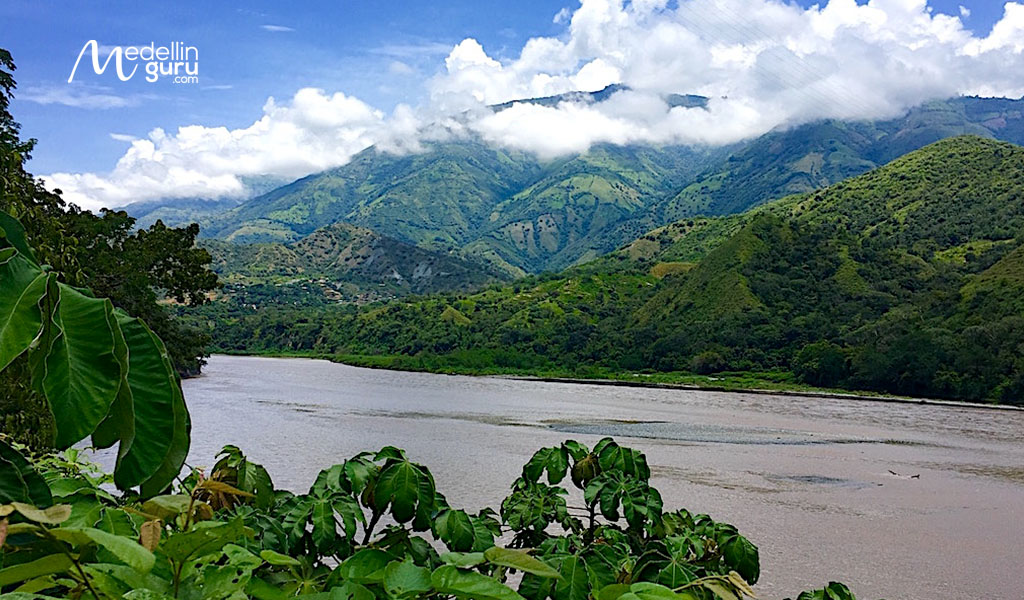
Founded in 1541 by Jorge Robledo, Santa Fe de Antioquia reigns as one of the oldest settlements in the region. It is also one of the best-preserved pueblos in Colombia.
Affectionately called by some as ‘The Mother City’, Santa Fe, was originally the capital of Antioquia. However, in 1826 the Government of Antioquia moved to Medellín, taking with it all the money for investment in infrastructure. Consequently, it left Santa Fe a beautiful preserved pueblo where time has essentially stood still.
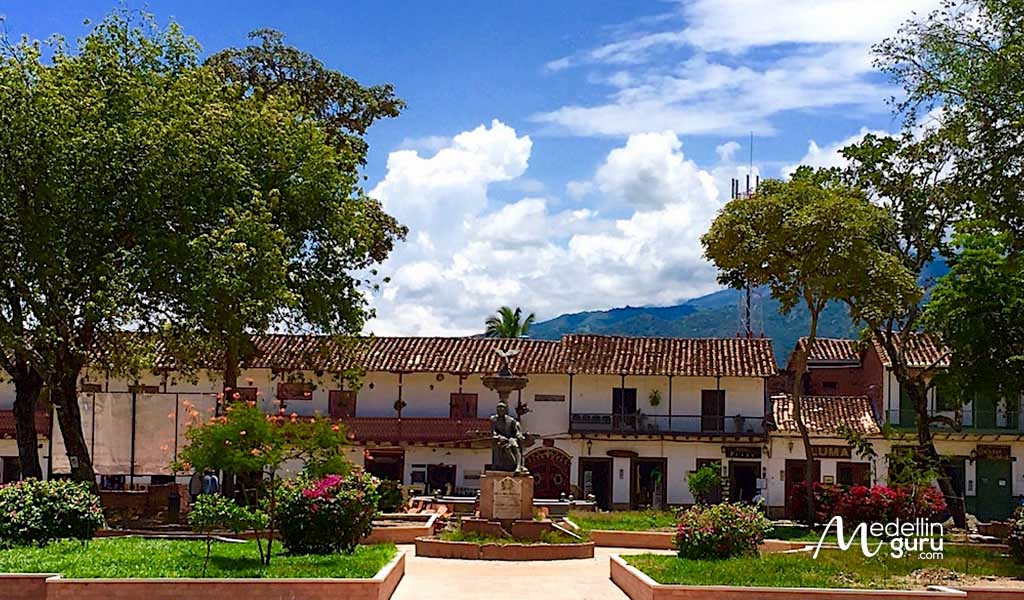
When you stroll through the town, you will encounter a plethora of architectural gems from historical churches to bougainvillea lined plazas. All of which have been declared a national monument.
From Medellin to Santa Fe de Antioquia
Location: about 1.5 hours northwest from Medellín – depart from the North Bus Terminal (Terminal Norte).
Santa Fe de Antioquia popular due to its well-preserved colonial architecture, cobbled streets and many things to see and do.
Jericó in Southern Antioquia is known as the Athens of the Southwest and proudly displays all the necessary ingredients for the perfect touristic destination.
It has religious attractions, a well-preserved colonial architecture and heritage, generous nature all around, hiking and paragliding. And Jericó is one of the best coffee towns in Colombia, which is culturally rich.
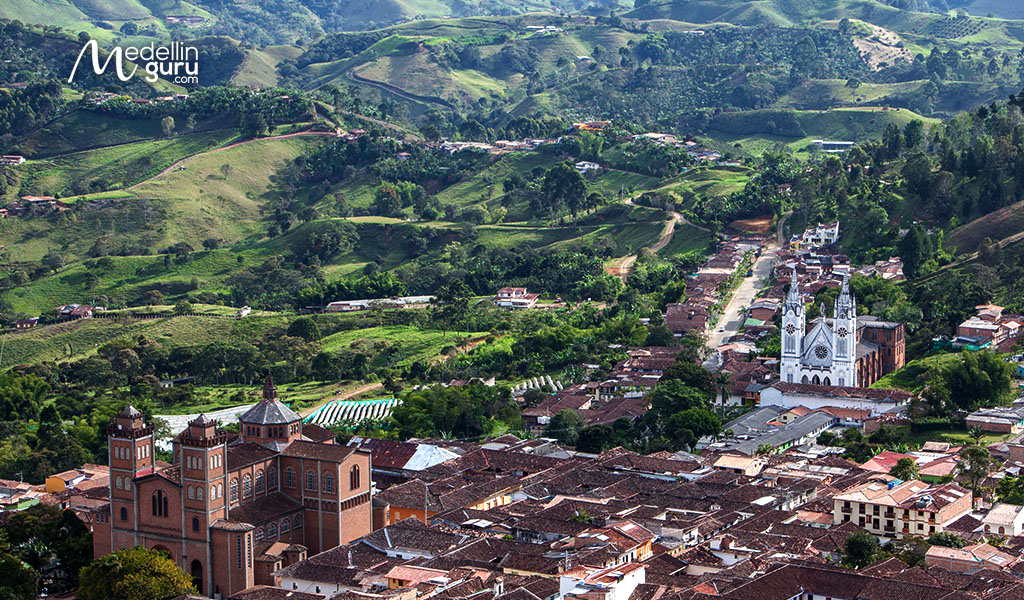
Any nature lovers, walkers, hikers and paragliders, will be content with what the landscape of Jericó has in store. This little pueblo is located in the foothills of the Western Mountain Range at a height of 6,400 feet (1,950 meters) above sea level.
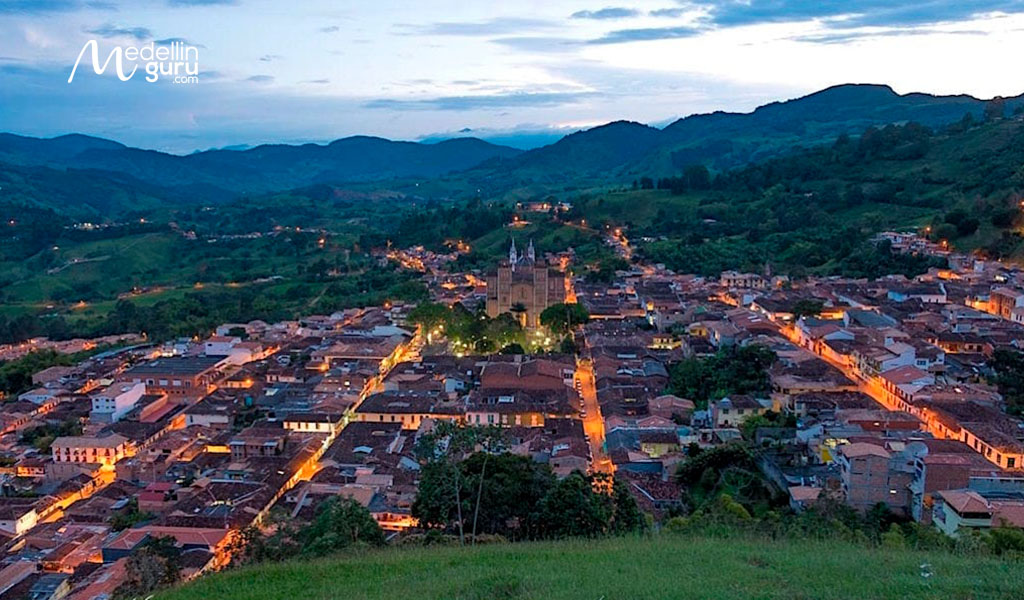
Also, it overlooks the canyon of the Rio Cauca, which is the second longest river in Colombia. At such height, Jericó offers incredible viewpoints.
These are many of the reasons why Jericó should be on your bucket-list while you are in Antioquia or even in Colombia.
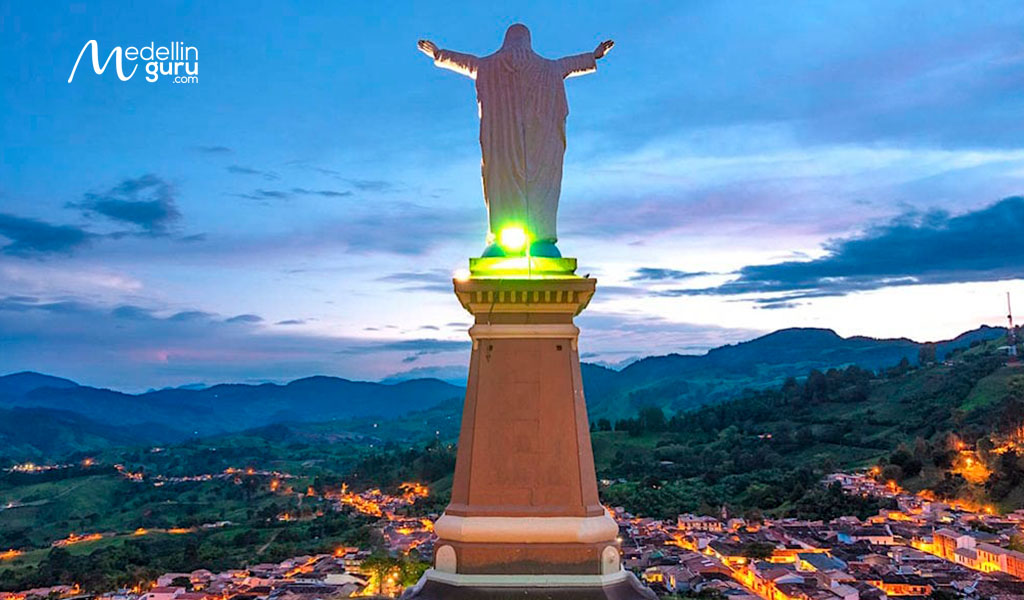
If you want to discover an authentic side of Colombia, a blend of nature, sports activities, a religious destination, well-preserved architectures and identity, visit Jericó.
From Medellin to Jericó
Location: about three hours south of Medellín – depart from the South Bus Terminal (Terminal Sur).
Located only about three hours from Medellín, discover what is considered one of the best pueblos in Colombia.
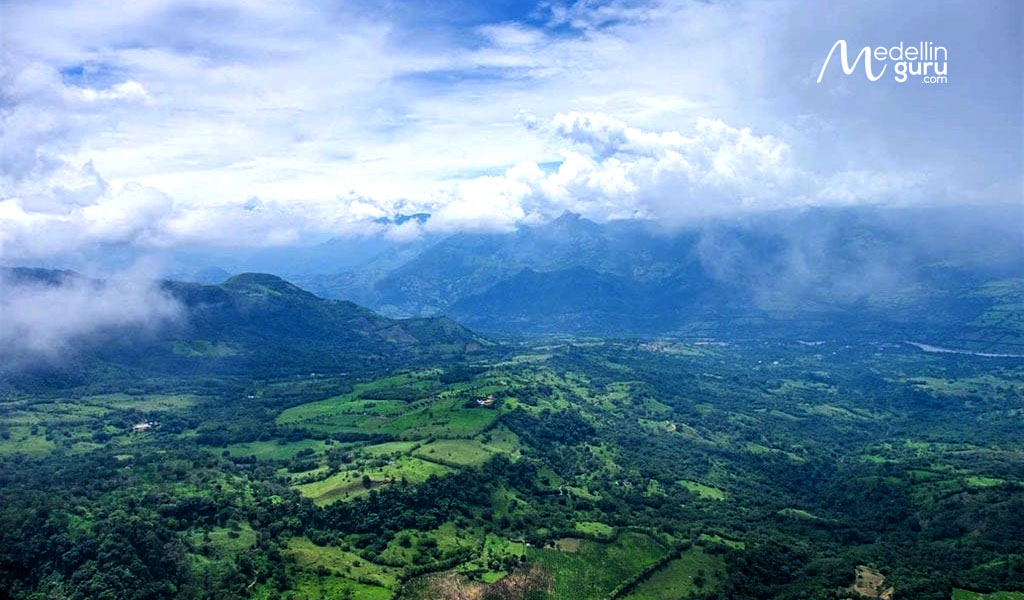
Barbosa, Antioquia is a pueblo or small town located only about 35 minutes from Medellín. Surprisingly, Barbosa is off the beaten path and it’s a hidden gem, as it surprisingly hasn’t yet been discovered by many foreign tourists.
This is due to Barbosa not being in any of the English-language Colombia guidebooks and not much information about this pueblo is available on the Internet.
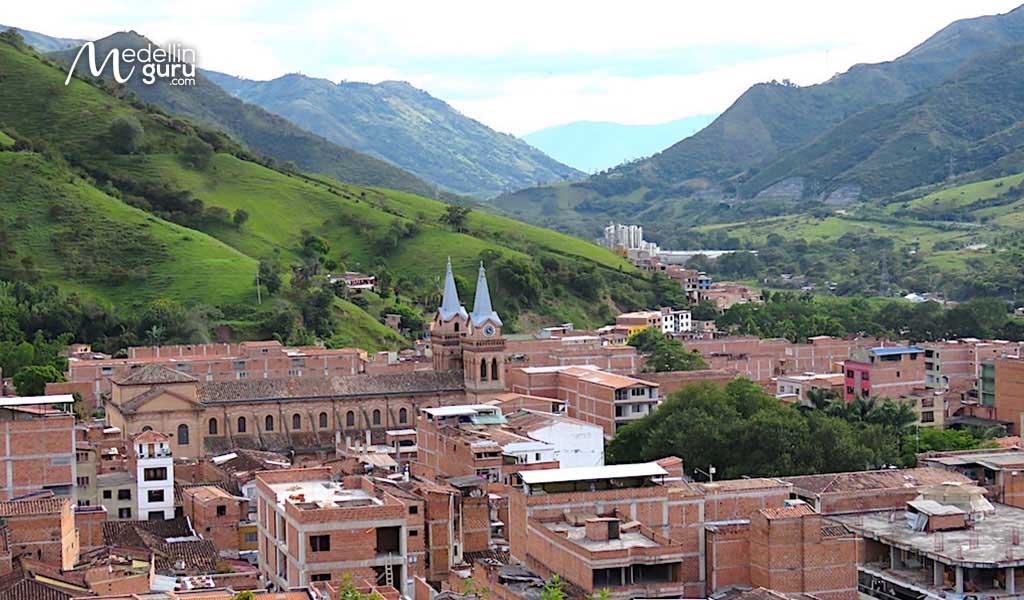
Barbosa is a close and great getaway from Medellín with streams, waterfalls, natural swimming pools, hiking, horseback riding and many other things to do nearby. And it’s located at the northern end of the Aburrá Valley.
In addition, Barbosa has trails linking the town with surrounding villages. So, there is ample opportunity for hiking or horseback riding while being surrounded by nature for those who like getting off the beaten path. Also, this is also a kid-friendly location with many water activities for kids.
But it’s located so close to Medellín that it makes for a very easy day trip. In addition, there is much to do in Barbosa and nearby making it also a nice weekend getaway location.
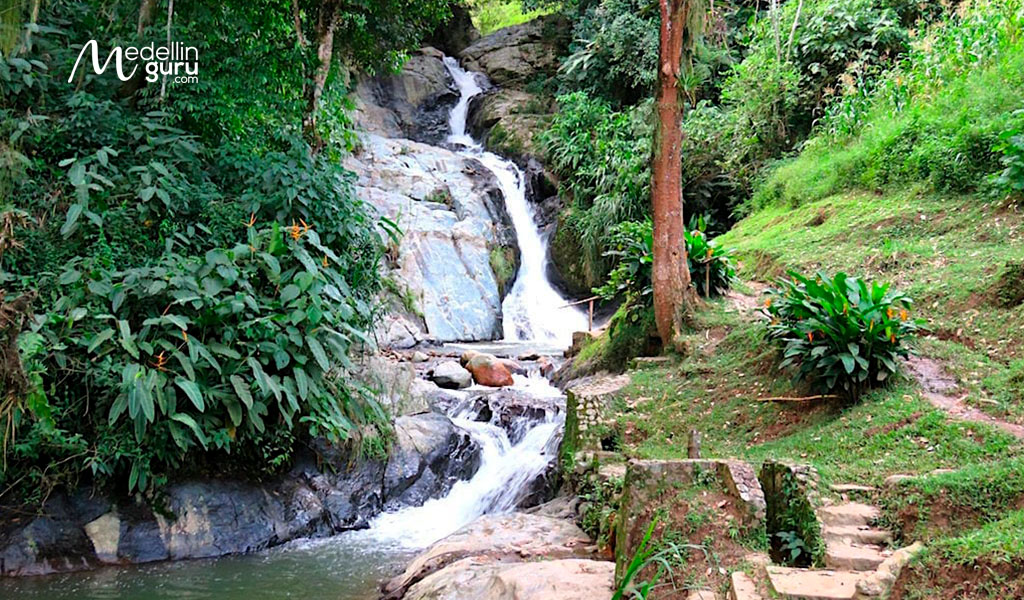
From Medellin to Barbosa
Location: about 35 minutes northeast of Medellín – depart on a metro bus from the Medellín metro Niquía station on Line A.
o, it you don’t have time to visit one of the Antioquia pueblos that are located further away, Barbosa is a much closer option that is worth visiting.
Medellin Guru Insurance Service
The insurance agency we partnered with has helped 1.893 Medellin Guru readers.
San Carlos is a small pueblo near Medellín that hasn’t yet been discovered by many foreigners. But it’s a hidden gem surrounded by mountains, rivers, waterfalls and nature.
I was looking for a new pueblo to go to on a long weekend. And a Colombian friend recommended San Carlos. So, I went and I was amazed by all the water activities and hiking available near this small pueblo. Unfortunately, my friend didn’t tell me how long some of the hikes are in the area or I would have spent more time there.
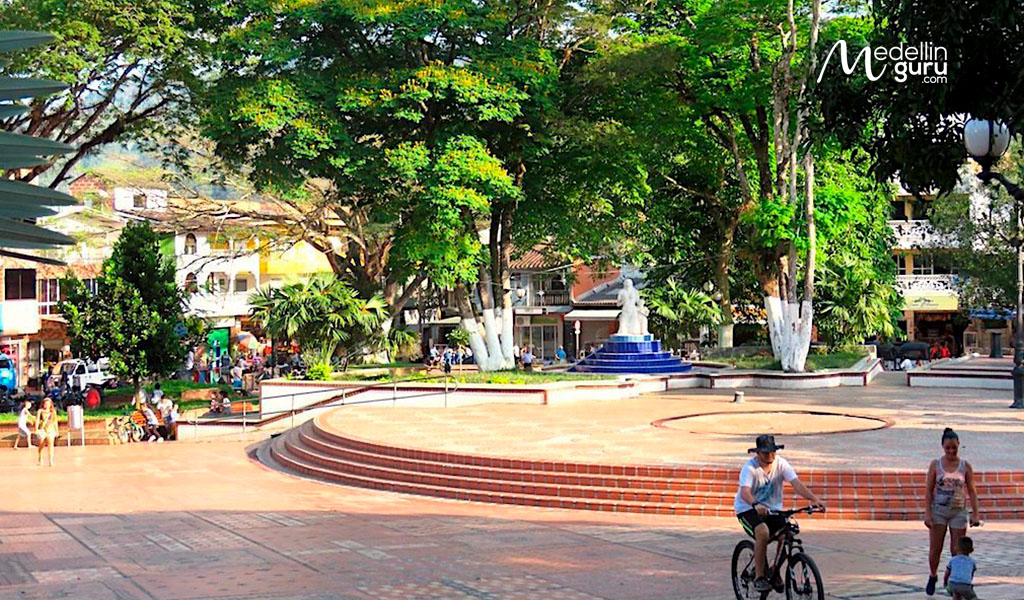
In addition, San Carlos can be seen as a major success story of a troubled pueblo in Colombia with a bloody past that has completely turned things around with the help of the Colombian military and it is now considered a safe place to visit.
San Carlos is a small pueblo near Medellín that is definitely worth visiting, particularly if you like hiking and nature. And it’s completely off the beaten path of foreigner tourists.
From Medellin to San Carlos
Location: about 4 to 5 hours east of Medellín – depart from the North Bus Terminal (Terminal Norte).
When I visited San Carlos, I didn’t hear English once in the three days and two nights I was there. Furthermore, some local shopkeepers told me there are rarely foreign tourists in the pueblo.

Abejorral is a small pueblo only about three hours from Medellín that hasn’t yet been discovered by many foreigner tourists.
But it’s a hidden gem with dazzling landscapes that is a perfect opportunity for hikers and rock climbers to escape Medellín.

Abejorral is a small pueblo that currently has a population of about 20,000. Its economy is primarily related to agriculture, cattle raising, mining and floriculture.
However, it’s hoped that tourism will increase in the area. Abejorral has tourism opportunities, since it has old houses of typical Antioquia architecture. And there are also waterfalls and dazzling landscapes nearby.
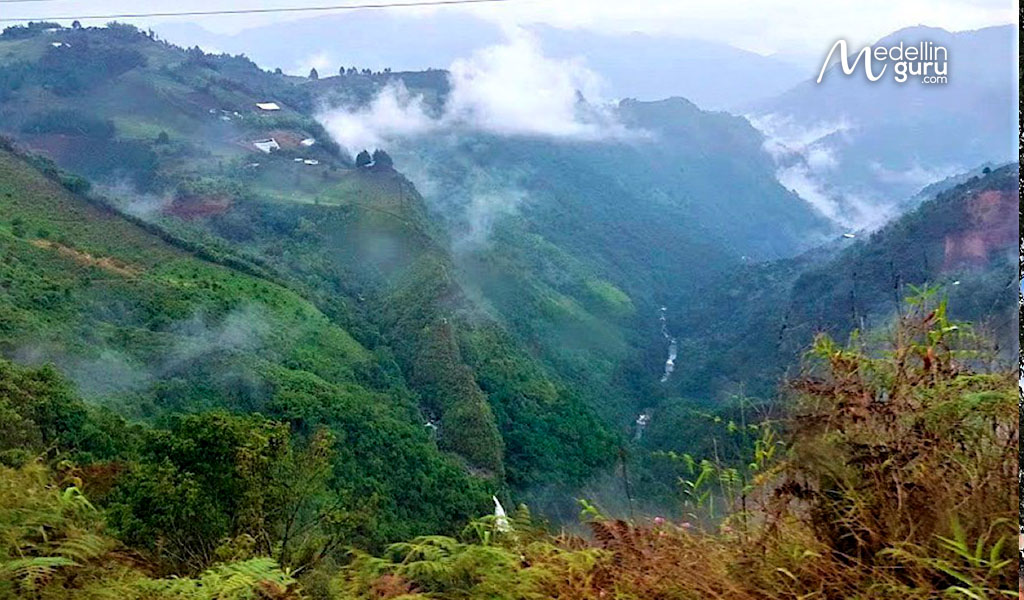
The pueblo of Abejorral is quaint, colorful and traditional. The colonial architecture that is so popular in Colombia is displayed prominently here, leading the historical center of the town to be considered a Colombian National Monument in its own right.
Abejorral is a picturesque pueblo that makes for a great weekend trip from Medellin. Also, it’s off the beaten path of foreigner tourists, so you likely won’t hear much English.
From Medellin to Abejorral
Location: about three hours south from Medellín – depart from the North or South Bus Terminals (Terminal Norte or Terminal Sur).
But there are many things to do, especially if you have an adventurous streak. And the area around the pueblo features spectacular views of the Colombian countryside.
A traditional craft in Colombia that is often less highlighted is the country’s world-renowned ceramics industry. And the heart of that industry lies in the small pueblo El Carmen de Viboral near Medellín, which is definitely worth visiting. El Carmen de Viboral is located only 34 miles (54km) from Medellín in the Eastern Hills.
Colombia’s ceramics industry is also starting to become more well-known and is quite interesting. El Carmen de Viboral has the added benefit of not yet being on the foreign tourist trail, which makes a visit there all the more authentic.
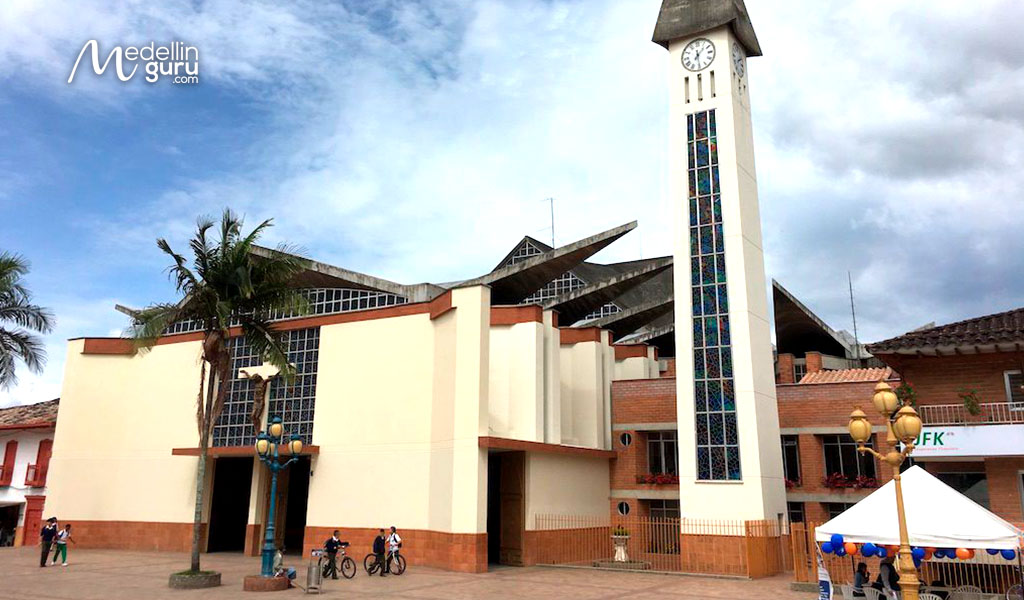
This unassuming pueblo is a hidden gem – still waiting to be discovered by foreigners. It’s full of pottery shops and a number of still surviving workshops. The brightly colored ‘Ceramics Street’ adds to its charm. And it’s the perfect day-trip from Medellín to learn about the ceramics history in Colombia and to pick up a bargain souvenir.
The pocket-sized pueblo of El Carmen de Viboral can justifiably claim to be the heart of Colombia’s ceramics industry. This is because there are still several factories and workshops in existence that produce artisanal, individually hand-decorated ceramics.
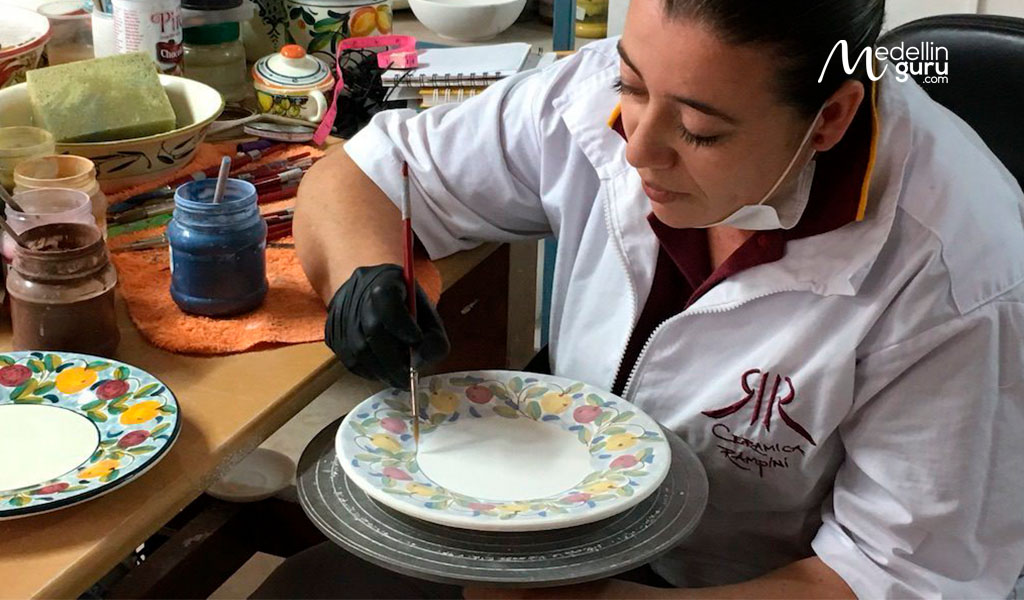
Also, the ceramics production in El Carmen de Viboral focuses primarily on exquisite tableware, kitchen utensils, washbasins, candlesticks, and vases. It’s renowned tradition of ceramics making has even placed El Carmen de Viboral on the world map.
Known as the cradle of artisan ceramics in Colombia, pieces from El Carmen de Viboral are even owned by the likes of Queen Elizabeth II and former U.S. President Barack Obama.
From Medellin to El Carmen de Viboral
Location: about 1.5 hours east of Medellín – depart from the North Bus Terminal (Terminal Norte).
Keep in mind to have a coat when you visit Carmen de Viboral. The average temperature is 18º Celsius (64º Fahrenheit). Take sunscreen and protect yourself as much as possible with a hat or cap if you are going to be exposed to the sun.
Medellin Guru Guides
Download the guide Colombia: a must-see destination from ProColombia with helpful information about Medellín and Colombia
The Best of Medellín, Colombia
Besides this article about the eight best pueblos near Medellín, Medellin Guru has several more articles about the best and top places and things to do in Medellín including:
- 35 Top Things to Do in Medellín and Nearby: Top Tourist Attractions
- 21 Best FREE Things to Do in Medellín and the Aburrá Valley
- 17 Top Kid-Friendly Things to Do in Medellín and Nearby
- 14 Best Malls of Medellín – the Ultimate Guide to Medellín Malls
- 12 Best Museums of Medellín and the Aburrá Valley
- 8 Best Pueblos Near Medellín Worth Visiting
- 7 Best Panoramic Views of Medellín
- 5 Best Neighborhoods in Medellín
- 2 Best Walking Tours in Medellín
- 14 Top Churches in Medellín Worth Visiting
- 22 Best Mobile Apps to Use in Medellín and Colombia
Also, Medellin Guru has several more articles about the best restaurants and coffee shops in Medellín and the Aburrá Valley:
- 19 Best restaurants in Laureles in Medellín
- 15 Best Restaurants in Envigado, Colombia
- 15 Best Restaurants in Sabaneta, Colombia
- 14 Best Pizza Places in Medellín: The Best Pizzerias in the City
- 13 Best Burgers in Medellín: Best Burger Places in the Aburrá Valley
- 12 Best Steakhouses in Medellín and the Aburrá Valley
- 12 Best Vegan and Vegetarian Restaurants in El Poblado
- 10 Best Mexican Restaurants in Medellín and the Aburrá Valley
- 9 Best Colombian Restaurants in Medellín and the Aburrá Valley
- 9 Best Italian Restaurants in Medellín and the Aburrá Valley
- 9 Best Places for Brunch in El Poblado
- 5 Best Independent Coffee Shops in El Poblado
- 8 Top Coffee Shops in Laureles
- 5 Best Nano/Micro Breweries in Medellín
The Best Pueblos Near Medellín – Problems with the Travel Guidebooks
The English language Colombia travel guidebooks in my opinion don’t do a good job of covering the best pueblos near Medellín. The most widely sold travel guidebook about Colombia is the Lonely Planet Colombia Travel Guide.
In August 2018, Lonely Planet published a new edition of their Colombia guidebook. And in my opinion, this new Lonely Planet guidebook isn’t much better than the previous edition published in 2015. I reviewed the 2018 Lonely Planet Colombia travel guide in a separate article.
For example, the 2018 Lonely Planet Colombia (Travel Guide) only includes three pueblos near Medellín: Guatapé, Santa Fe de Antioquia and Jardín. So, they are missing five of the eight pueblos in our best pueblos near Medellín list.
Throughout Lonely Planet’s Colombia travel guide they are missing many of the best things to see and do in Colombia including a number of the best pueblos. Plus there are inaccuracies and out-of-date information.
Other English language travel guidebooks about Colombia are also missing many of the best pueblos near Medellín. So, unfortunately some of the best pueblos near Medellín remain hidden gems that are off the radar of foreigner tourists visiting the city.
The Bottom Line: 8 Best Pueblos Near Medellín Worth a Visit Including Hidden Gems
There are many pueblos located near Medellín that are worth visiting but some have fewer things to do. We chose eight of the best pueblos in this article that have many things to do nearby and are worth spending time in.
Four different writers for Medellin Guru wrote detailed guides to all eight pueblos in our list of the best pueblos near Medellín. You can click on the link in the heading of each of the pueblos listed above to find these detailed guides, which include the best things to do, where to stay and how to get to each of these pueblos.
Within a 4- or 5-hour radius of Medellín there are literally dozens of pueblos. And almost all of these aren’t found in the English language travel guidebooks.
We plan to check out many other pueblos near Medellín and will update this article with any additional pueblos we find that belong on this list of the best pueblos near Medellín worth visiting.
What is your favorite pueblo near Medellín?
Medellin Guru Social media
Be part of our community. Find out about news, participate in events and enjoy the best of the city.


